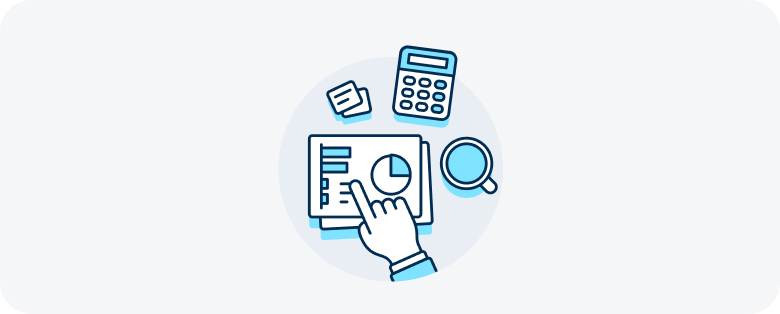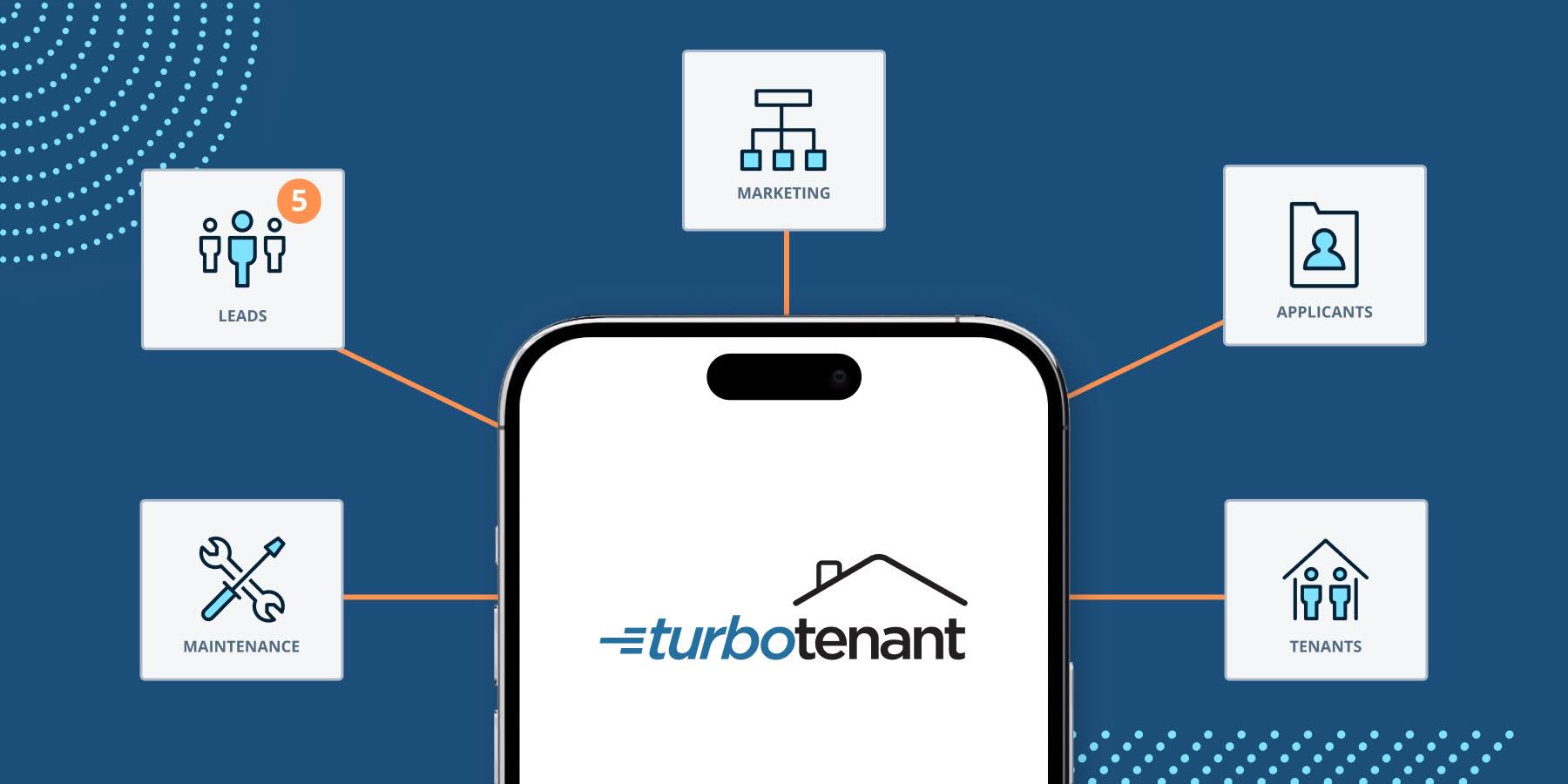Learning how to be a landlord in Oregon entails more than just finding tenants and collecting rent. You’ll need to handle rental listings, send applications, screen applicants, create lease agreements, and deal with unfair stereotypes (all before a tenant moves in).
Thankfully, you have plenty of resources at your disposal that can help you streamline your rental business. With them, you can automate almost every facet of property management to free up time and make your investment as passive as possible.
As luck would have it, we created this article to connect you with all the relevant tools and tips you need. So, whether you’re just getting started or already managing a few units, this guide will break down the steps you can take to put your Oregon rentals on autopilot.
Marketing. Applications. Leases. Payments.
Research the Market
While previous landlord experience is nice, knowing your rental markets is paramount. Whether you already follow local real estate trends or you’re starting from a blank slate, understanding the market you’re dealing with will give you the insight you need to do this the right way.
To educate yourself, you’ll need to invest time in learning many of the key factors about the rental markets you’re considering. Staying informed is how smart landlords stay competitive.
Essential metrics to consider include:
- Affordability
- Tenant demand
- Licensing requirements
- Real estate trends
- Proximity to transportation, shopping, and entertainment
- Economic stability
- Inventory levels
- Job availability
- Neighborhood quality
- Future development plans
- Population growth
While the list above covers much of what you’ll need to know, it’s not exhaustive. So, if you’re serious about choosing the right market, keep researching and check out our Best Rental Markets in Oregon guide.
Want a quick look at the potential rental income a property could generate? Run a free rent estimate report to generate a solid starting price based on recent market data.
Do Some Math
Once you’ve put your market under the microscope, it’s time to run some numbers. It might feel tedious, but the time you spend now will help you better understand your potential rental income, maintenance costs, and overall cash flow later.
Before making necessary projections, ask a few simple questions about the property. Answer these thoughtfully; the more accurate you are, the better decisions you’ll make:
- Does the property need any immediate repairs or upgrades to meet rental standards?
- How much are similar rentals in the neighborhood bringing in each month?
- Are units in this area sitting empty, or do they fill quickly?
- Can I pay the bills if the unit stays vacant for a month or two?
After you’ve asked yourself these questions (and answered them honestly), it’s time to make some calculations that shed light on the finances surrounding rental properties in your market.
NOI (Net Operating Income) shows how much money a property brings in after subtracting operating costs. It should give you clear expectations about actual income, making it easier to judge whether a property fits your financial goals.
Cap rate (Capitalization rate) measures your financial return by comparing a property’s purchase price to its NOI. Use cap rate to size up potential real estate deals, gauge the market’s competitiveness, and compare investments against each other.
ROI (Return on Investment) shows you how much profit a property generates compared to how much money you’ve invested. This critical figure helps you decide if the property is worth the trouble and whether or not it moves your portfolio in the right direction.
The Rent-to-income ratio compares a tenant’s income to the rent you plan to charge. It indicates whether someone can afford the unit. Keeping this ratio in check helps you find tenants more likely to pay on time and renew their leases.
Cash flow shows how much money you pocket monthly after paying all your expenses. Positive cash flow means the property can remain viable, even with occasional vacancies or unexpected maintenance bills.
Rental yield compares your yearly rental income to the property’s value or purchase price. A higher rental yield usually indicates stronger investment returns.
Crunching these numbers is easy. Use our landlord toolbox to access several free calculators to measure key rental statistics and uncover crucial details about investment properties in your market.
Read Up On Local Landlord-Tenant Law
Federal laws, such as the Fair Housing Act, Americans with Disabilities Act, Fair Credit Reporting Act, and Servicemembers Civil Relief Act, apply across all 50 states. In addition to those, Oregon landlords also need to understand state laws to stay compliant and avoid legal issues.
Covering every Oregon landlord-tenant law here would slow things down, so check out our comprehensive Oregon landlord-tenant law guide to dive into the nitty gritty. We update it often and double-check the details with our legal team to make sure it stays current.
While the following laws apply statewide, some cities and counties have rules that supersede them. Always check local ordinances before making any assumptions.
Security deposit rules: Oregon law requires landlords to return the security deposit within 31 days after the tenant moves out. If the landlord withholds money for unpaid rent, repairs, or cleaning beyond normal wear and tear, they must provide the tenant with a written itemized list documenting the charges. Tenants may recover up to twice the amount wrongfully kept if the landlord doesn’t follow the rules (ORS § 90.300).
Entry requirements: In Oregon, landlords must give tenants at least 24 hours’ written notice (stating the reason, date, and time of entry) before entering a rental unit. Landlords can enter without notice only during emergencies or within 7 days of a tenant’s written repair request (ORS § 90.322).
Eviction laws: In Oregon, landlords can evict tenants for nonpayment of rent, lease violations, and serious misconduct, among other reasons. For nonpayment, landlords may issue either a 72-hour or 144-hour Notice to Pay Rent or Quit, depending on how late the rent is, giving tenants a chance to pay and avoid eviction (ORS § 90.394). For fixable lease violations, landlords must provide a 30-day Notice with a 14-day Right to Cure. The landlord may proceed with eviction if the tenant doesn’t fix the issue by the deadline (ORS § 90.392). In more serious situations (such as significant property damage or threats to health and safety), landlords may serve the tenant a 24-hour Notice of Termination (ORS § 90.396).
Rent control: Oregon enforces statewide rent control limiting annual rent increases to no more than 10% for most residential properties at least 15 years old. Landlords can raise rent only once in a 12-month period and must provide at least 90 days of written notice before the increase takes effect. If a landlord violates these rules, tenants may recover up to 3 months of rent plus damages (ORS § 90.323).
Lease breaking: In Oregon, tenants may end a lease early without penalty due to unsafe living conditions, military duty, or if they are victims of domestic violence, sexual assault, or stalking (ORS §§ 90.320, 90.453). Tenants who break a lease without a legally valid reason may still owe rent until the lease ends or the unit is re-rented. Landlords must make reasonable efforts to re-rent the property and minimize financial losses for the tenant (ORS § 90.427).
Use Property Management Software
Once you’ve crunched the numbers, know your market, and understand landlord-tenant law, it’s time to put some systems in place. Here’s where property management software comes in.
Property management software helps landlords save time by consolidating rent collection, lease drafting, tenant screening, expense tracking, and all other essential duties into one platform. TurboTenant, a go-to option among landlords, will be your trusty tool.
In the next section, we’ll walk through a landlord’s primary responsibilities and demonstrate how software can help you manage them all.
Market Your Properties
Once you get your Oregon rentals ready to hit the market, you’ll need to bring in solid tenants. Start by creating an eye-grabbing listing and post it across major rental sites to reach as many potential renters as possible.
Reference your earlier market research to set a competitive rent price, take attractive property photos, and write a detailed description highlighting your unit’s best features. Other landlords are after the same folks you are, so make your listings stand out.
Ultimately, TurboTenant simplifies the entire rental marketing process from start to finish. With it, you can create listings with AI, add pre-screener questions to weed out undesirable applicants, and publish your property to dozens of top platforms, all from your intuitive landlord dashboard.
And yes, we include this feature for free with every TurboTenant account.
Collect Rental Applications Digitally
Once your dialed-in listing attracts a stack of applicants, it’s time to figure out who’s worth considering. To do so, you’ll need to gain insight into their income, job history, rental references, and credit to see whether or not they’re a good match for your property.
This four-step process is quite simple:
- Create your free TurboTenant account
- Build a custom digital rental application
- Enter your applicant’s contact information
- Let our platform sort out the rest
To ensure you’re compliant, each application automatically adheres to federal and Oregon screening laws. And, in case you’re worried about the price, TransUnion (our screening partner) will handle the reports and bill applicants directly so that you won’t pay a dime out of pocket.
On the other hand, if you find yourself in a highly competitive market, you can pay the screening fee to entice applicants.
Use a Legally Compliant Lease
After you’ve gone through the tenant screening process, you’ll ideally have a strong candidate or two with solid credit, reliable landlord references, a clean background, and a stable income.
Once you’ve selected your next tenant, it’s time to lock in rental terms and create a legally binding lease agreement. A strong rental contract spells out expectations for both sides, ensures you stay compliant with landlord-tenant law, and protects your investment.
Sure, you could hire a lawyer to write your next lease, but it will cost you valuable time and money. A more cost-effective move would be to use property management software to create a state-specific rental agreement in under 15 minutes.
Our Unlimited Plan will allow you to create as many lease agreements as you desire (across multiple states) for roughly the same price a lawyer would charge you to walk through their door. Plus, because we update our lease agreements regularly, you won’t need to call the lawyer back up to revise the lease once a new law hits the books.
Lock Down Maintenance Requests
In a perfect world, your rentals stay pristine and never need repairs. But, as you know, we’re not living in a fantasyland. When things break in your rental (and they will), tenants expect your undivided attention, lightning-fast repairs, and results, not excuses.
As the landlord, it’s your legal responsibility to promptly handle repairs for your tenants. In Oregon (and all other 49 states), falling short of basic habitability requirements means you’ve breached your rental contract and broken the law.
To stay on top of every maintenance request, use TurboTenant’s Maintenance Plus. It will instantly take pressure off you by handling repair requests, gathering quotes from nearby vendors, and arranging fast and affordable repairs without interrupting your busy life.
Collect Rent Online
Rent: the ever-important monthly payment your entire rental business relies upon. If tenants don’t pay rent on time, your rental operation could come to a screeching halt. Without rental income, this whole ship sinks.
So, how can you make rent collection easier? The answer is simple: Let your tenants pay online. According to The Financial Brand, “almost two-thirds (65% have paid a bill by mobile device in the past twelve months, while over half (54%) have used an online portal supplied by a biller.” (Seriously, who pays rent with a check anymore?)
While you can successfully collect rent through Venmo or Zelle, property management software offers a more integrated setup with better transfer limits. With TurboTenant, you can easily accept recurring payments, send reminders, and track every transaction.
Streamline Rental Property Accounting
At the risk of oversimplifying it, real estate investing ultimately comes down to two factors:
- How much money your properties bring in
- How much money you spend on your properties
As such, you need to track every dollar earned and spent. But for many of us landlords, the finances associated with rental properties send shivers down our spines, especially as tax season starts creeping up.
If you want to avoid trouble with the IRS, you must ensure your accounting and bookkeeping are unimpeachable. Staying on top of your finances isn’t optional; it’s imperative for running a successful rental business.
QuickBooks and Excel Spreadsheets balance the numbers for some investors, but they weren’t explicitly engineered for landlords like you. The good news? There are landlord-specific accounting tools designed with your unique needs in mind.
TurboTenant Accounting offers you a more customized way to manage your rental finances. With it, you can track cash flow, expenses, income, profit and loss, and balance sheets without nervously poking around your books every week.
Customize your accounting preferences, and watch in wonder as our software does its thing.
TurboTenant Makes DIY Landlording Easy
Being a landlord in Oregon comes with great responsibility, but the job shouldn’t have you scrambling to keep the ship from sinking. Thankfully, TurboTenant’s free property management tools will help you automate your operation, remain compliant, and stay the course.
Whether listing rentals, screening tenants, creating leases, collecting rent, or tracking your finances, TurboTenant has you covered. Our landlord software will handle the details so you can focus on growing your business without getting overwhelmed.
If you’re ready to stop wasting time and start managing your Oregon rental the right way, create your free TurboTenant account today.





